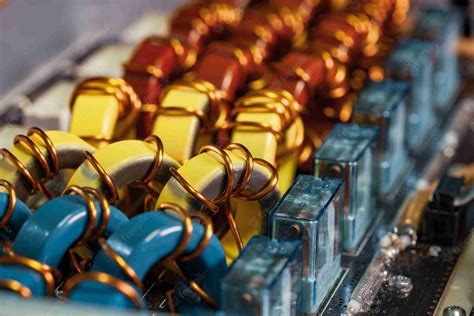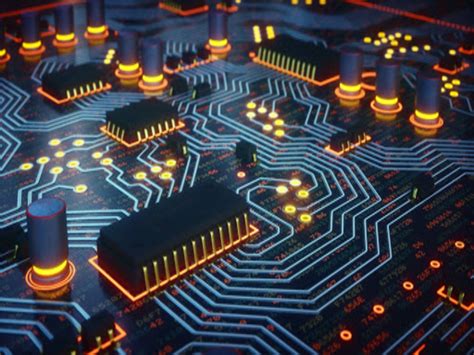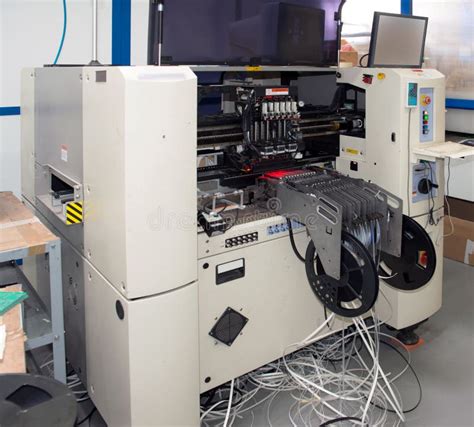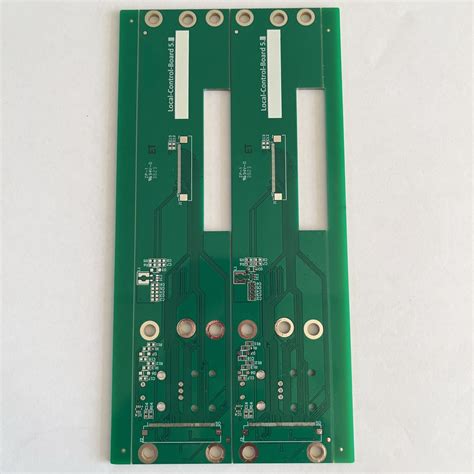Leading Innovations in Circuit Manufacturing Companies

Key Takeaways
In today’s rapidly evolving landscape, understanding the dynamics of pcb manufacturing is essential for anyone involved in electronics. You may find that pcb manufacturing companies are not just focused on producing circuit boards but are also harnessing cutting-edge technologies to enhance the quality and efficiency of their products. The pcb manufacturing cost plays a significant role in determining the feasibility of new projects; therefore, exploring ways to optimize costs without compromising quality is a priority for most pcb manufacturing businesses. Innovations such as automated assembly, advanced materials, and AI-driven design software are reshaping how companies approach circuit design and production. Moreover, staying abreast of these trends allows you to make informed decisions about which manufacturers can provide the best solutions for your specific needs. Emphasizing quality and efficiency can lead to successful collaborations with leading firms; exploring resources available through platforms like Andwin PCB can further empower your knowledge and decision-making process in this field. As you navigate your way through these advancements, keep an eye on how they not only affect production but also enhance overall operational success across various industries.

The Evolution of Circuit Manufacturing: A Historical Perspective
The evolution of circuit manufacturing has been marked by significant advancements that have shaped the landscape of PCB manufacturing as we know it today. From its humble beginnings, where manual assembly was the norm, to the highly automated processes seen in modern PCB manufacturing companies, the journey has been remarkable. You may wonder how these changes have impacted the pcb manufacturing cost and overall efficiency. Initially, pcb manufacturing businesses relied on basic techniques and materials that limited production volumes and scalability. However, with the introduction of sophisticated machinery and innovations in materials science, companies have been able to enhance their production capabilities vastly.
Currently, technology plays a pivotal role in shaping high-quality PCB production. Advanced machinery, coupled with precision engineering techniques, enables manufacturers to produce intricate designs that cater to an array of applications. This transition not only increases reliability but also dramatically reduces time to market for new electronic products.
The table below illustrates key milestones in the evolution of circuit manufacturing:
| Year | Milestone | Impact |
|---|---|---|
| 1950s | Manual assembly techniques | Limited production capacity |
| 1980s | Introduction of automated assembly systems | Increased efficiency and accuracy |
| 2000s | Adoption of CAD and CNC technologies | Enhanced design precision and scalability |
| Present | Integration of IoT in manufacturing processes | Smart factories with improved supply chain management |
This historical perspective provides a foundation for understanding how far pcb manufacturing has come and sets the stage for the innovations defining current industry practices. As you explore these advancements further, consider how they align with today’s increasing demands for quality and efficiency within your own projects and objectives in circuit design.
Key Technologies Shaping High-Quality PCB Production
In the rapidly evolving landscape of pcb manufacturing, several key technologies are driving the production of high-quality printed circuit boards (PCBs). One of the most significant advancements is the adoption of automation and robotics, which streamline processes and improve precision in assembly lines. These technologies not only enhance productivity but also reduce pcb manufacturing costs, allowing pcb manufacturing companies to offer competitive pricing without compromising quality. Additionally, innovations in material science have resulted in the development of advanced substrates that boast better thermal performance and signal integrity, critical for meeting the demands of modern electronics. The rise of laser technology has transformed traditional methods, enabling more intricate designs and faster turnaround times through rapid prototyping. This is particularly beneficial for businesses that need quick solutions to adapt to changing market requirements. Moreover, integrating design for manufacturability (DFM) principles into the production process ensures that both functionality and manufacturability are considered from the outset, further enhancing efficiency. By embracing these cutting-edge technologies, pcb manufacturing companies position themselves as leaders in an ever-competitive market, catering to industries ranging from telecommunications to automotive with greater agility and innovation.
Rapid Prototyping: Accelerating Time to Market in Circuit Design
In today’s fast-paced technological landscape, rapid prototyping has become an essential component of the pcb manufacturing process. By allowing for the quick development and testing of new designs, you can significantly reduce the time to market for your products. This method enables pcb manufacturing companies to create functional prototypes without the extensive lead times associated with traditional manufacturing methods. As a result, you can iterate on designs more frequently and refine them based on real-world performance.
One of the key benefits of rapid prototyping in pcb manufacturing is its potential to cut down on overall pcb manufacturing costs. By identifying design flaws early in the process, you save both time and money that would otherwise be spent on revisions post-production. Furthermore, this iterative approach fosters innovation—companies can explore novel concepts without committing substantial resources upfront.
“Investing in rapid prototyping is not just about speed; it’s about embracing flexibility and enhancing product quality,” experts suggest.
The future of your pcb manufacturing business hinges not only on speed but also on your ability to adapt to market changes and consumer demands. As technology evolves, staying ahead with advanced prototyping techniques will be crucial for maintaining a competitive edge. By leveraging these innovations, you ensure that your production processes are both efficient and responsive, ultimately paving the way for success in various industries reliant on circuit design.
Innovations in Circuit Design: Meeting Modern Industry Demands
In today’s rapidly evolving technological landscape, pcb manufacturing has become a cornerstone of modern electronics. To thrive in this competitive market, pcb manufacturing companies are continuously innovating to meet the dynamic needs of various industries. This includes customizing designs that cater to specific applications, such as wearable technology and IoT devices, where space and efficiency are paramount. Advanced software tools are being utilized to optimize printed circuit board (PCB) layouts, facilitating smaller, more efficient designs while ensuring reliability and performance.
Moreover, the focus on reducing pcb manufacturing costs while maintaining high quality has led to the adoption of cutting-edge techniques such as automated assembly processes and advanced materials. These innovations not only expedite production but also enhance the durability and functionality of the final products. As these companies streamline their operations through enhanced supply chain management and sophisticated prototyping methods, you can expect quicker turnaround times without compromising quality.
Ultimately, adapting to modern industry demands necessitates a proactive approach from pcb manufacturing businesses. By leveraging emerging technologies and staying attuned to consumer needs, they can effectively create innovative solutions that not only satisfy current market requirements but also anticipate future trends in electronic design. This strategic evolution is crucial for maintaining competitive edge and achieving long-term success in the complex world of electronic manufacturing.

The Role of Supply Chain Management in Efficient PCB Manufacturing
In the realm of PCB manufacturing, effective supply chain management plays a pivotal role in enhancing efficiency and reducing costs. As you navigate through the complexities of the PCB manufacturing business, understanding the intricacies of your supply chain can directly impact your overall pcb manufacturing cost. Streamlined logistics, timely sourcing of materials, and strong relationships with suppliers are essential elements that can significantly influence production timelines and quality. By optimizing these aspects, you position your business to better meet customer demands while maintaining high standards in quality control. Modern pcb manufacturing companies leverage technology to improve inventory management and forecasting—allowing for agile responses to market fluctuations. As you incorporate robust supply chain strategies, you not only reduce potential delays but also build a foundation for long-term success in an increasingly competitive landscape. Ultimately, investing in effective supply chain management enhances your ability to deliver superior products that meet the evolving needs of various industries while driving your pcb manufacturing capabilities forward.

Case Studies: Success Stories from Leading Circuit Manufacturing Companies
In the realm of pcb manufacturing, various companies have successfully navigated challenges, leveraging innovative practices to set themselves apart in the industry. One notable pcb manufacturing company exemplifying this success is XYZ Circuits, which has revolutionized its production processes through advanced automation techniques. By investing in state-of-the-art machinery, XYZ Circuits significantly reduced its pcb manufacturing cost, allowing it to offer competitive pricing without compromising quality. Another standout is ABC Electronics, known for its rapid prototyping capabilities that enable clients to accelerate their time-to-market. This company has adopted agile methodologies that not only enhance pcb manufacturing efficiency but also foster collaboration with customers in the design process. These success stories illustrate how strategic investments and a commitment to innovation contribute to a thriving pcb manufacturing business. As you explore these case studies, consider how these companies have utilized their expertise in high-quality PCB production and innovative solutions to drive success across various industries.
Sustainability Practices in Circuit Manufacturing: A Growing Trend
In recent years, pcb manufacturing has increasingly embraced sustainability practices as a response to global environmental challenges and market demands. As you navigate the pcb manufacturing business, you may notice that many leading pcb manufacturing companies are adopting innovative strategies aimed at reducing their carbon footprint and enhancing resource efficiency. This includes utilizing eco-friendly materials in their pcb manufacturing processes, implementing waste reduction techniques, and investing in energy-efficient technologies. Furthermore, companies are prioritizing the recycling of materials to minimize waste and promote a circular economy within the industry. By integrating these sustainable practices, you can not only contribute to environmental conservation but also potentially reduce pcb manufacturing costs over time. As customers become more conscious of sustainability, your commitment to these practices can enhance your reputation and competitiveness in the market, ultimately driving success for your pcb manufacturing business while fostering a greener future.
Conclusion
As you reflect on the journey through the landscape of circuit manufacturing, it becomes clear that pcb manufacturing is not just about producing components; it embodies a fusion of technology, innovation, and efficiency. The advancements in pcb manufacturing companies have highlighted their commitment to quality and precision, demonstrating how they cater to an ever-evolving market. With a keen focus on enhancing pcb manufacturing cost efficiency while maintaining high standards, these companies adopt robust practices that allow them to streamline their processes. Your understanding of the pcb manufacturing business will reveal how critical these innovations are in meeting the demands of various industries. As these companies continue to push boundaries and leverage new technologies, you will see how they shape the future of electronics, leading to improved products and services that benefit you and the broader market.
FAQs
What are the benefits of working with PCB manufacturing companies?
Working with PCB manufacturing companies ensures high-quality production standards, timely delivery, and the ability to customize designs to suit your specific needs. This collaboration can ultimately enhance your product’s performance and reliability while managing pcb manufacturing costs effectively.
How does rapid prototyping influence PCB manufacturing?
Rapid prototyping significantly accelerates the design cycle, allowing you to iterate designs quickly. This process helps identify potential flaws early on, reducing overall time to market and optimizing the efficiency of your pcb manufacturing business.
What factors affect the cost of PCB manufacturing?
Several factors influence pcb manufacturing cost, including material selection, complexity of the design, production volume, and lead times. Understanding these elements can help you make informed decisions when planning your projects.
How can sustainable practices improve PCB manufacturing?
Embracing sustainability in pcb manufacturing companies not only helps reduce environmental impact but can also lead to cost savings. Utilizing eco-friendly materials and processes can enhance brand reputation while meeting increasing consumer demand for responsible production practices.
For further insights on pcb manufacturing, please click here.







